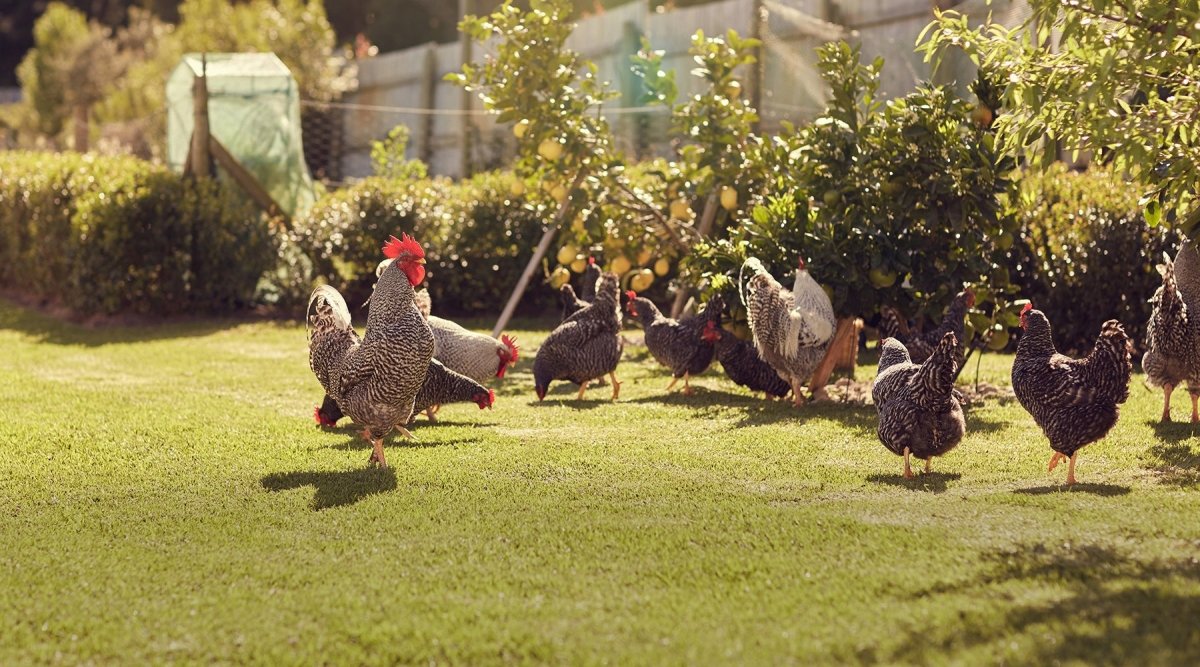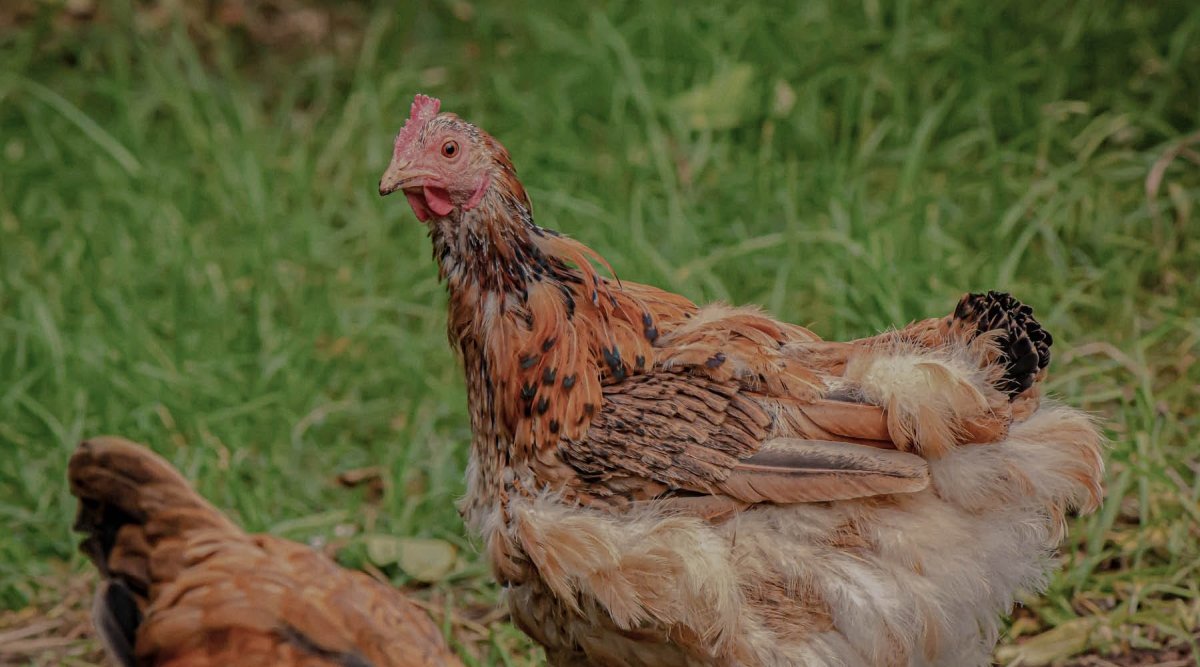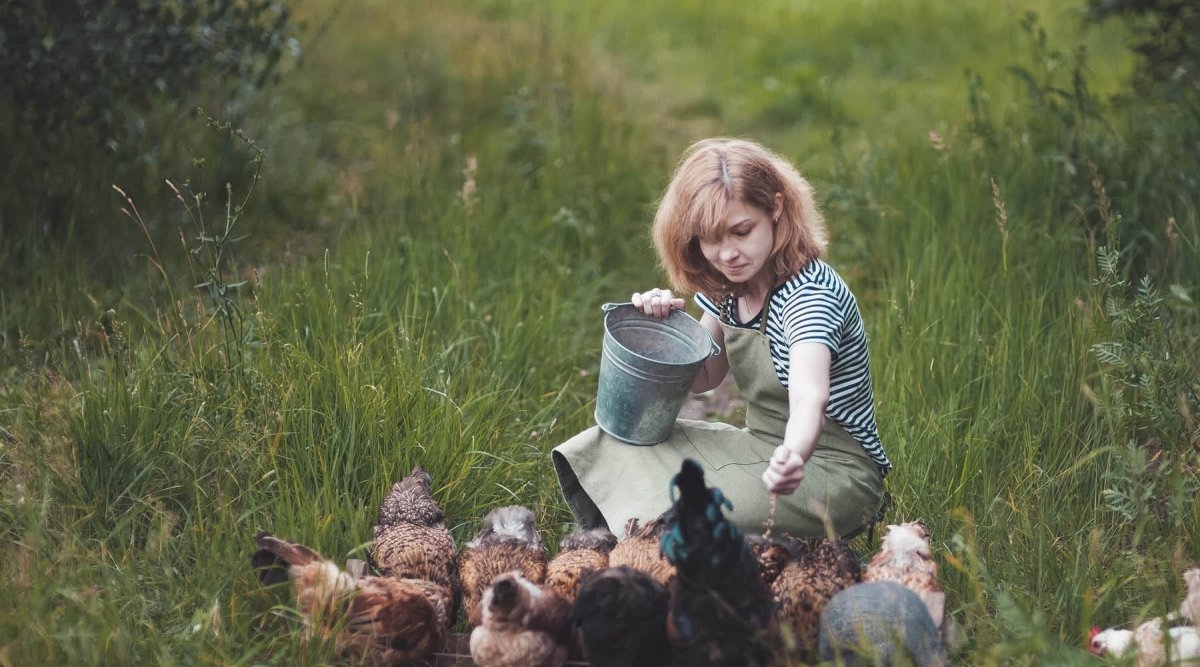The trend towards self-sufficiency is on the rise. Terms such as urban gardening and urban farming are now commonplace: vegetables, fruit and herbs from the home garden or patio are now commonplace in many households. But the self-sufficiency trend goes one step further, with the keeping of livestock for personal use becoming increasingly widespread. At the forefront of this trend is keeping chickens in your own garden. The animals require little space and can be kept in small communities.
The advantages of keeping your own chickens are obvious: away from factory farming and towards fresh eggs from home production. Not only do you get to enjoy organic eggs, but you also have an overview of the chickens' diet. And what the chicken eats ends up in the egg.
What's more, keeping chickens is fun, brings some variety and you develop a bond with your new pets. However, if you are not enthusiastic about the animals, don't want to look after chickens and don't want to invest the time, you should refrain from keeping chickens privately.
Can I keep chickens in the garden?
Before you turn your garden into a free-range chicken zone, you should first clarify whether chickens are allowed to be kept in your garden at all. If you are a tenant, you must first discuss your new hobby with your landlord. If you have the go-ahead from your landlord, it is advisable to record this regulation in the rental agreement.
You must also ask your local authority whether keeping chickens is permitted in your area and what legal requirements must be met. You can find the minimum requirements for keeping chickens in the Ordinance on the Keeping of User Animals.
The next point of contact should be your immediate neighbors. If they also agree to the keeping of chickens, you can get started.
There is no ban on private poultry farming in Germany. Chickens are considered small animals, just like rabbits or other rodents. However, there are numerous rulings on noise pollution caused by chickens, according to which the crowing of a rooster may only take place at certain times. The environment in which the rooster and chickens are kept is also decisive. In the village/countryside, there is much more leeway than in a purely residential area. It is still best to come to an agreement with the neighbor in advance. A fresh delivery from the private henhouse can have a supportive effect. Otherwise, the private keeping of chickens and a cockerel is permitted in residential areas.
The Ordinance on the Keeping of Livestock regulates the minimum requirements for keeping chickens.
How much space do chickens need in the garden?
You don't have to own a farm to keep chickens in your garden. A garden of 25 square meters or even a terrace of this size is sufficient. Of course, a large flock of chickens cannot be kept in this space. The larger the run for the animals, the better, of course. It is advisable to divide the free-range area for chickens into two areas. While the chickens can peck in one area, the other area can recover and the grass can grow back to provide feed.
As a rule, however, the following applies:
In the free range: 5 - 8 square meters per chicken of a small breed
In the enclosure: 1 square meter for 3 - 5 hens of a small breed
It is also possible to keep the animals only in an enclosure. We do not recommend this, as it does not correspond to species-appropriate husbandry and the animals need the variety of free range.
How much space you really need to give your chickens a comfortable life depends largely on how many animals you want to keep and how large the chicken breeds should be. Four hens and one cockerel are already sufficient to provide a family of four with eggs.
Which chicken breed is suitable for the garden?
There are around 180 registered and recognized chicken breeds. Small chicken breeds, such as bantams, are particularly suitable for keeping chickens in residential areas. This chicken breed is small and does not have a great urge to move around. This is particularly helpful if there is not much space in the garden. Most bantam chicken breeds are easy to care for and are therefore also suitable for beginners.
Small chicken breeds for beginners
German bantam chicken: an agile, agile, lively and robust primal dwarf chicken; the cock reaches a weight of 800 g, the hen up to 600 g; laying performance is approx. 100 eggs per year; the German bantam chicken is available in 18 different colors
Dwarf Sussex: English dwarf chicken breed; calm, trusting and friendly in nature; always on the lookout for food; the cock weighs around 1200 g, the hen 1000 g; laying performance is around 150 eggs per year
Dwarf Wyandotte: former breed from the USA; sedate nature, quite undemanding and not very fond of flying; large number of colors; the cock reaches up to 1300 g and the hen up to 1100 g; good laying performance up to 160 eggs per year
Antwerp Bearded Dwarf: formerly bred in Belgium; 24 recognized colors; friendly, relaxed and one of the smallest dwarf chickens; the cock reaches a weight of 700 g and the hen 600 g; the laying performance of the hens is approx. 90 eggs per year
Dwarf Barnevelder: German-Dutch breed; originally bred for cramped urban housing conditions; uncomplicated, frugal and lively; the cock weighs up to 1100 g, the hen approx. 900 g; the laying performance reaches up to 160 eggs per year

What do I need to keep chickens?
In addition to the chickens themselves, you also need suitable accommodation and, of course, daily supplies in the form of food.
Free range:
Keeping chickens purely indoors is not species-appropriate. The animals like to scratch the ground and peck at the grass for insects, worms, seeds, etc. Free range also helps to prevent the chickens from getting fat and "rusting".
The free-range area should be fenced in to protect the animals from predators and, of course, from escaping. It is also advisable to cover the free-range area with a grid or wire mesh to prevent flighty breeds in particular from escaping. Chickens like to take a sand bath, so an area with sand should be provided for them to scratch and bathe.
However, it may be difficult to get them into the coop in the evening, so they will have to spend the night outside. With a little practice, however, you will soon get the hang of how to persuade your feathery pets.
Chicken coop:
If some chickens can manage without free range, the chicken coop is a different story. Chickens need a chicken coop in which they can retreat and spend the night. It also serves as protection at night. The coop should be suitable for both summer and winter and therefore well insulated.
If you keep only a few chickens, a mobile chicken coop is usually sufficient. You can buy these directly from a DIY store or order them online. The advantage of a mobile chicken coop is that you can move it without any major problems.
If you are a handyman, you can also build a unique chicken coop for your chickens yourself. Using materials such as wood or stone, there are numerous ways to design a chicken coop yourself. Alternatively, you can also use a second-hand coop; there are always chicken owners who are giving up keeping chickens and have a coop and accessories to sell.
Feed:
Chickens' food sources include grass, leaves, insects, worms, various berries and seeds, hay, in other words just about anything that can be found in nature. It is therefore not without reason that the animals are omnivores. Chickens are also happy to eat kitchen waste. However, this should be cut into small pieces to avoid the risk of choking.
Nevertheless, the animals should be fed with an appropriate supplementary feed. This will cover their nutritional requirements and ensure a balanced diet for your poultry. Some supplementary feeds also contain important herbal mixtures that are not normally found in free-range poultry.
Natural sources of calcium are important to support egg formation and bone growth. Mussel grit is well tolerated by the animals and can be mixed daily with the main food. It provides plenty of calcium and supports the chickens' mineral requirements.




